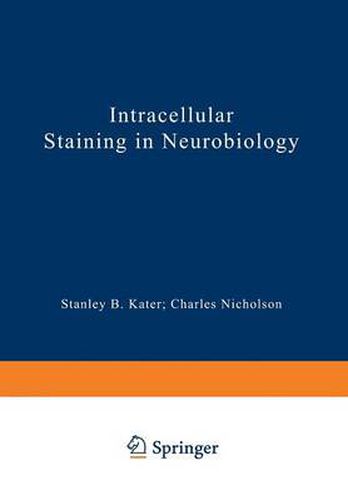Readings Newsletter
Become a Readings Member to make your shopping experience even easier.
Sign in or sign up for free!
You’re not far away from qualifying for FREE standard shipping within Australia
You’ve qualified for FREE standard shipping within Australia
The cart is loading…






This title is printed to order. This book may have been self-published. If so, we cannot guarantee the quality of the content. In the main most books will have gone through the editing process however some may not. We therefore suggest that you be aware of this before ordering this book. If in doubt check either the author or publisher’s details as we are unable to accept any returns unless they are faulty. Please contact us if you have any questions.
The purpose of this book is to provide basic reference material to facilitate the further development and application of the intracellular staining techniques which originated with the introduction of Procion dye as a neurocellular stain. We had sev eral specific objectives in compiling these chapters. First, we recognized that both the techniques and results of intracellular staining have been derived from a variety of preparations and published in diverse journals. Consequently, we tried to make this information more readily available by incorporating several reviews by original authors. This should provide the reader with a knowledge of the kinds of neurobiological prob lems for which intracellular staining has already been employed. A second objective was to facilitate extension of these methods to a wider variety of problems. To this end there are chapters dealing with Procion dye as a marker for ultrastructural investi gations, the use of cobalt as a staining compound and the implementation of computer techniques for quantitative studies of neuronal relationships. As background for further extension of these methods this volume contains material on the history of the discovery of Procion dyes as intracellular stains, the chemistry of these dyes, and fundamentals of fluorescence microscopy. Our final specific objective was to present details of technical procedures that were not readily available in the literature.
$9.00 standard shipping within Australia
FREE standard shipping within Australia for orders over $100.00
Express & International shipping calculated at checkout
This title is printed to order. This book may have been self-published. If so, we cannot guarantee the quality of the content. In the main most books will have gone through the editing process however some may not. We therefore suggest that you be aware of this before ordering this book. If in doubt check either the author or publisher’s details as we are unable to accept any returns unless they are faulty. Please contact us if you have any questions.
The purpose of this book is to provide basic reference material to facilitate the further development and application of the intracellular staining techniques which originated with the introduction of Procion dye as a neurocellular stain. We had sev eral specific objectives in compiling these chapters. First, we recognized that both the techniques and results of intracellular staining have been derived from a variety of preparations and published in diverse journals. Consequently, we tried to make this information more readily available by incorporating several reviews by original authors. This should provide the reader with a knowledge of the kinds of neurobiological prob lems for which intracellular staining has already been employed. A second objective was to facilitate extension of these methods to a wider variety of problems. To this end there are chapters dealing with Procion dye as a marker for ultrastructural investi gations, the use of cobalt as a staining compound and the implementation of computer techniques for quantitative studies of neuronal relationships. As background for further extension of these methods this volume contains material on the history of the discovery of Procion dyes as intracellular stains, the chemistry of these dyes, and fundamentals of fluorescence microscopy. Our final specific objective was to present details of technical procedures that were not readily available in the literature.